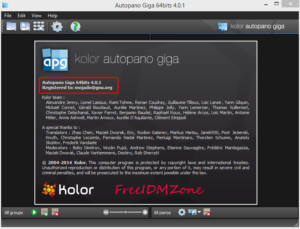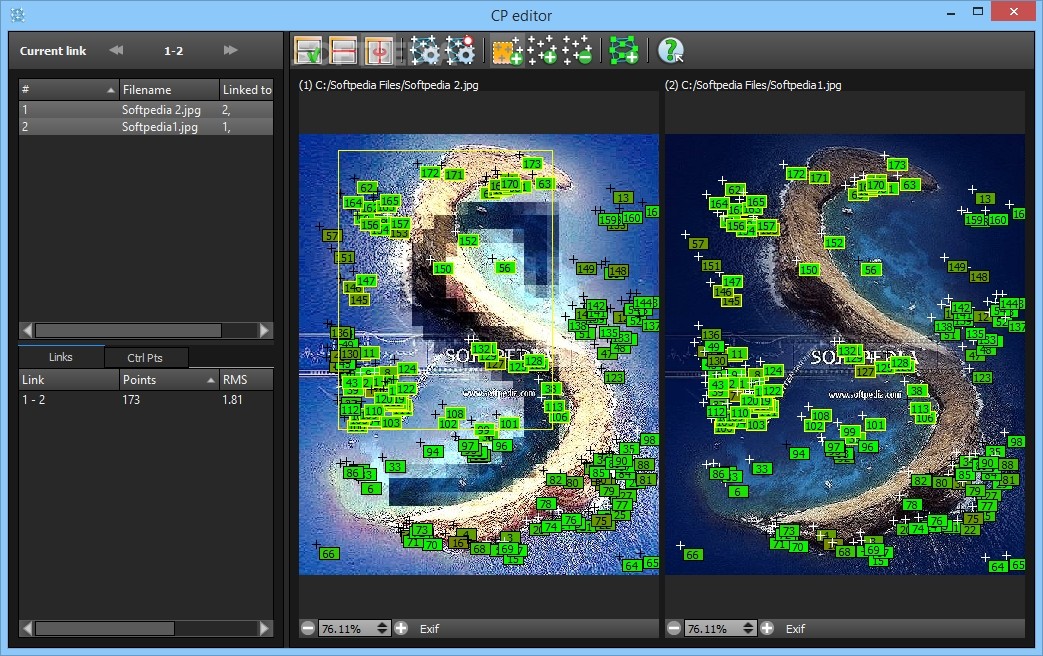
Autopano Giga.I am planning on getting into landscape photography a little more and hopefully making a little bit of money whilst doing so, by selling canvases online. The real-time panorama editor lets you adjust your image, straighten it up, change the projection, adjust the horizon and crop your panorama.h Auto Horizon function can instantly fix panoramic picturs that ar ithr laning or bnt, gnrating a mor attractiv visual ffct. It can also apply fusion blending to bracketed images and create HDR panoramas. Autopano Giga automatically corrects the colors and exposure of your images.

Is a prime even required? Remember, these canvases will be sold. Would the IQ of the 18-55 WR or even the 18-300 suffice for large canvas prints (1.5m wide) - I.e. I think it all depends what type of photography you make: Interior VS Exterior, 360 linear VS 360 spherical.Budget would probably be around $1200-$1500, using pricing from B & H Photo. For a list, it may be best to just look at this thread that I started here on PentaxForums about 4 years ago.Since I use both of them, I can say that they both have their pros and cons.
Fix Horizon Autopano Giga Full Frame Sensor
Is a prime even required? Remember, these canvases will be sold. Would the IQ of the 18-55 WR or even the 18-300 suffice for large canvas prints (1.5m wide) - I.e. OT: Hardly worth a separate thread, would anyone consider that a Full Frame sensor would be a necessity for doing this sort of thing, even when just starting out?

And really, the panorama is offsetting the larger sensor so no, you don't need full frame. OT: Hardly worth a separate thread, would anyone consider that a Full Frame sensor would be a necessity for doing this sort of thing, even when just starting out?Why not ask about medium format? You can do good panos with a small sensor, the beauty of a pano from a Pentax APSC camera is the smaller size of good primes. If you're patient the 90-100mm range is lots of detail but now you really are going to want a multilayer image and of course, more time during and after your shoot. A 50-70mm lens is better, but it will be more frames and less suitable for single layer panos (unless that long skinny look is your plan). I have used 100mm and even 300mm to stitch with, but really stitching with a 35mm with 7-8 images is going to get you a decent size print.
You didn't mention this part, so I thought I'd throw that in. The epic pro has a simple repeat function if focus stacking on multi-layers is your thing. A multi-layer pano mount also gives you more to work with (foreground/sky/crooked horizon cropping) and allows the longer lenses to become more viable too. I have a Gigpan Epic Pro, but the manual option pano mounts tend to be cheaper, lighter and easier to carry around whilst still allowing the ability to pan around the nodal point (if you get the right one). A single row pano is likely to be better suited at the 35-40mm previously mentioned.There's a number of panorama mounts on the market from $300-1300, the best range of options I've seen is B&H: Panoramic & Time Lapse Heads | B&H Photo Video. Yes you can go wider, but I think that 50-70 provides really good detail, with the limitation being if you only intend to do single row panoramas.
I should note first up that I have been stitching 7-8 images together and cropping - I do not intend on taking a single photo - unless it will somehow result in a better canvas.To stitch several shots and get a big photo (without distortion) you'd better get a lens in the range of 30mm to 100mm, I've done several panos with lenses in that range, yet I've done panos with DA21, which is good for where I wanted, but then the distortion of a super super wide view, might not be what you want, here is an example with DA21: (6vertical shots)But if you go for a longer lens like 35mm, and a little farther from the view, you can get more straight lines, here is one with DA35 ltd (4vertical shots)Here is one with DA55-300, at 55mm length! (8 shots in vertical, and no distortion, due to using long lens)To make it complete, here is one with M100mm macro lens, (this is 38 horizontal shots in several rows)And to give you where I was, here is a shot from that same place with DA21So, 28mm to 50mm is easier because you can make it with less photos, but if you go longer, you can make something better but with more work in shooting and stitching.And I think one thing (about the lens) is really important to make better stitches:Is that your lens should give you proper sharpness across the frame (at chosen aperture) to make the end result look best! and here is where a prime lens is great! but yet, you can make it with good zoom lenses too.I too shoot stitched landscapes, usually in low light conditions. You may have the lens already.I am planning on getting into landscape photography a little more and hopefully making a little bit of money whilst doing so, by selling canvases online. You could try one of your older lenses and compare with the zooms you've been using. Less cropping means more resolution in the same size frame.Anyhoo, typically I can't stay on task and end up writing a novel, but if you're intending to make money out of this venture you might be best off with a decent 50mm and spend the rest on a good mount and software. A level horizon saves on cropping.
Is a prime even required? Remember, these canvases will be sold. Would the IQ of the 18-55 WR or even the 18-300 suffice for large canvas prints (1.5m wide) - I.e. - I do think that this budget is adequate to start out with, however I would look to used lenses to stretch it a bit farther. Budget would probably be around $1200-$1500, using pricing from B & H Photo. Nothing professional - I have been too busy at my day job.Tas has some wonderful suggestions/recommendations.
Having said that, you will get better results with some different lenses. There is nothing wrong with the lenses. You can get wonderful images from these lenses. That is why prime lenses are used for best results, since there is just a single focal length to design to. The reason for this is beyond this ratio, the optical design becomes very complex and the more compromises creep in.
These two lenses are extremely good and relatively cheap. The next lens I would suggest is the DA 50 f1.8 (B&H has it new for $129). I think that will be your base lens. A past member here RioRico observed that commercial landscape photographers use FLs between the mid 20s to the mid 30s because they come with out distortion. There is a reason behind this suggestion. I saw it on sale new for $111 here during the holidays.
The DA 12-24/f4 and the DA 60-250/f4. You will want to book end these two primes with lenses that are a "bucket of primes". My next two suggestions are budget busters to a degree.


 0 kommentar(er)
0 kommentar(er)
